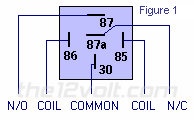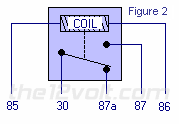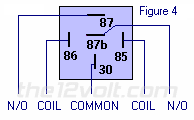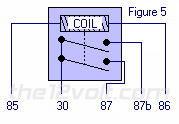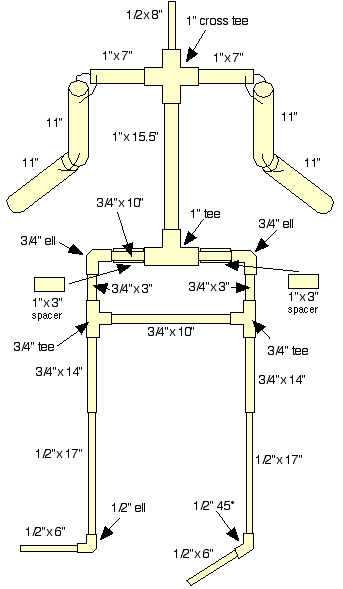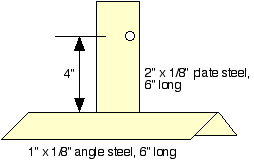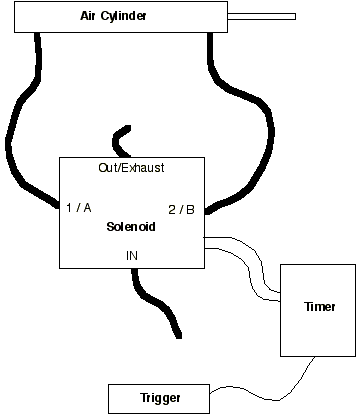SPDT Relay : (
Single
Pole
Double
Throw
Relay) an electromagnetic switch, consist of a coil (terminals 85 & 86), 1 common terminal (30), 1 normally closed terminal (87a), and one normally open terminal (87) (Figure 1).
When the coil of an SPDT relay (Figure 1) is at rest (not energized), the common terminal (30) and the normally closed terminal (87a) have continuity. When the coil is energized, the common terminal (30) and the normally open terminal (87) have continuity.
The diagram below center (Figure 2) shows an SPDT relay at rest, with the coil not energized. The diagram below right (Figure 3) shows the relay with the coil energized. As you can see, the coil is an electromagnet that causes the arm that is always connected to the common (30) to pivot when energized whereby contact is broken from the normally closed terminal (87a) and made with the normally open terminal (87).
When energizing the coil of a relay, polarity of the coil does not matter unless there is a
diode across the coil. If a diode is not present, you may attach positive voltage to either terminal of the coil and negative voltage to the other, otherwise you must connect positive to the side of the coil that the cathode side (side with stripe) of the diode is connected and negative to side of the coil that the anode side of the diode is connected.
SPST Relay : (
Single
Pole
Single
Throw
Relay) an electromagnetic switch, consist of a coil (terminals 85 & 86), 1 common terminal (30), and one normally open terminal (87). It
does not have a normally closed terminal like the SPDT relay, but may be used in place of SPDT relays in all diagrams shown on this site where terminal 87a is not used.
Dual Make SPST Relay : (
Single
Pole
Single
Throw
Relay) an electromagnetic switch, consist of a coil (terminals 85 & 86), 1 common terminal (30), and two normally open terminals (87 and
87b). Dual make SPST relays (Figure 4) are used to power two circuits at the same time that are normally isolated from each other, such as parking lamp circuits on German automobiles.
The diagram below center (Figure 5) shows a dual make SPST relay at rest, with the coil not energized. The diagram below right (Figure 6) shows the relay with the coil energized. The coil is an electromagnet that causes the arms that are always connected to the common (30) to pivot when energized whereby contact is made with the normally open terminals (87 and 87b).
Diodes are most often used across the coil to provide a path for current when the current path to the relay is interrupted (i.e. switched off, coil no longer energized). This allows the coil field to collapse without the voltage spike that would otherwise be generated. The diode protects switch or relay contacts and other circuits that may be sensitive to voltage spikes.
(JimR, contributor, install bay member) Why do I want to use a relay and do I really need to? Anytime you want to switch a device which draws more current than is provided by an output of a switch or component you'll need to use a relay. The coil of an
SPDT or an
SPST relay that we most commonly use draws very little current (less than 200 milliamps) and the amount of current that you can pass through a relay's common, normally closed, and normally open contacts will handle up to 30 or 40 amps. This allows you to switch devices such as headlights, parking lights, horns, etc., with low amperage outputs such as those found on keyless entry and alarm systems, and other components. In some cases you may need to switch multiple things at the same time using one output. A single output connected to multiple relays will allow you to open continuity and/or close continuity simultaneously on multiple wires.
There are far too many applications to list that require the use of a relay, but we do show many of the most popular applications in the pages that follow and many more in our
Relay Diagrams - Quick Reference application. If you are still unclear about what a relay does or if you should use one after you browse through the rest of this section, please post a question in
the12volt's install bay.






